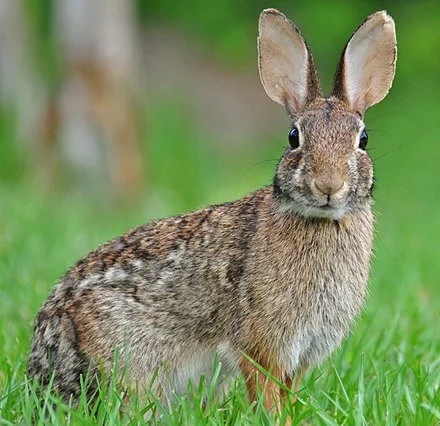
Plant mint
Eastern Cottontail rabbit
New England Cottontail
Excerpted and edited from an ecoRI News article written by staff reporter Bonnie Phillips:
“…. Anecdotal evidence seems to indicate that this is a banner year for bunnies.
“There could be a few reasons for that, according to Mary Gannon, a principal biologist and wildlife outreach coordinator for the Rhode Island Department of Environmental Management.
“Rabbit populations ‘can certainly boom … due to natural absence or fewer predators and a subsidized abundance of food,’ she said. In the case of rabbits, that hop-through restaurant is probably your beloved flower or vegetable garden.
“‘They particularly love beans, peas, and lettuce, and will munch on annual flower seedlings,’ Gannon said. ‘Clover is a big favorite as well.’
“What they don’t like, Gannon said, is plants in the mint family, milkweed, onions, and garlic — although she has seen young milkweed and allium stems nibbled by curious rabbits.
“The rabbits you are seeing in your yard are either Eastern Cottontails or New England Cottontails. The Eastern Cottontail was introduced in the 1900s to revive the declining native New England Cottontail population, according to DEM. During the past 50 years the range of this once-common rabbit has shrunk and its population has dwindled. Today, biologists believe there are only around 13,000 New England Cottontails left, according to New England Cottontail.’’


